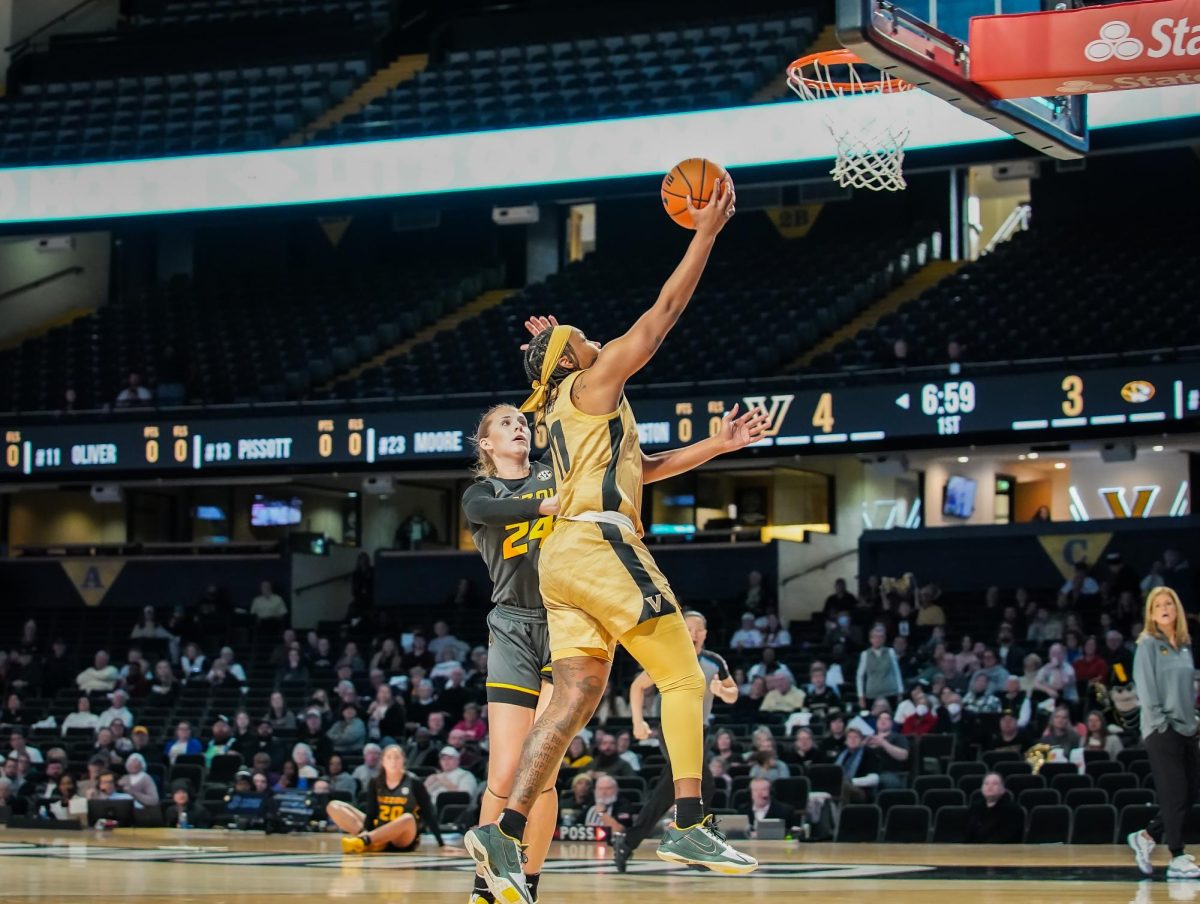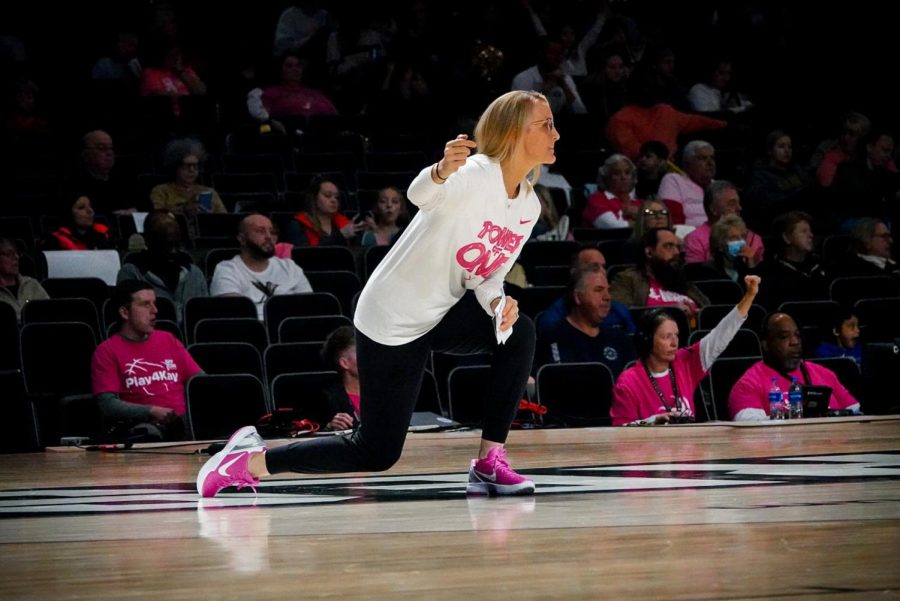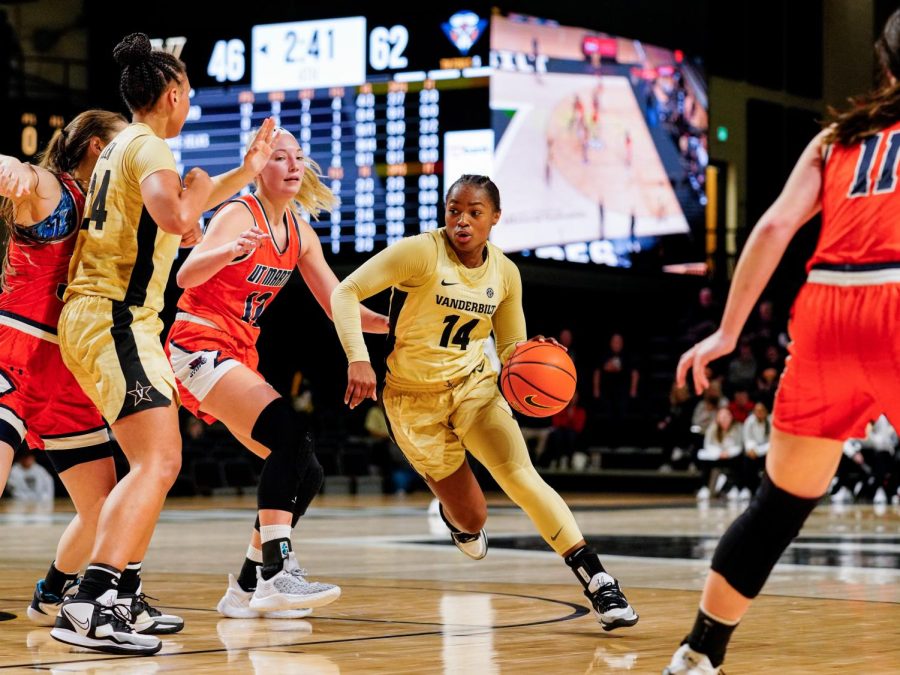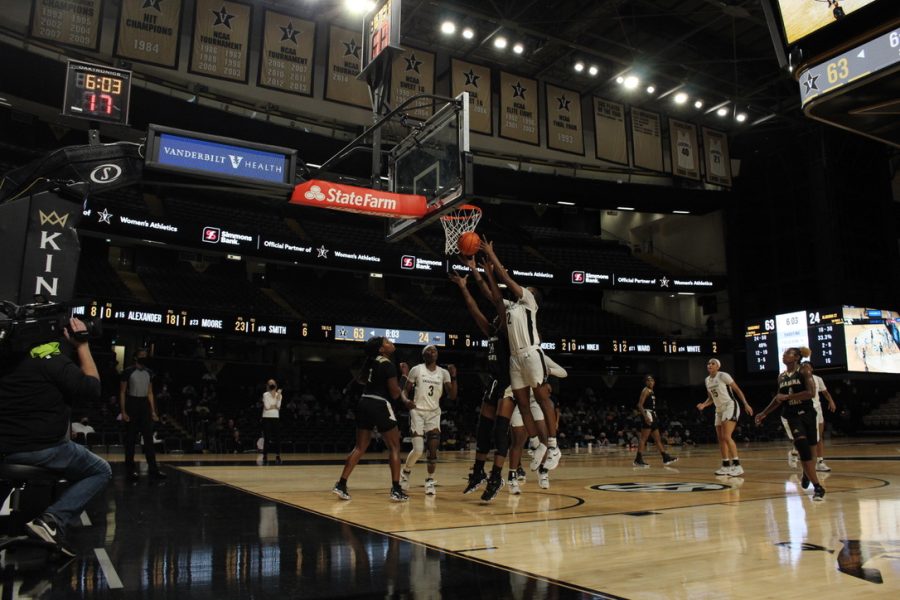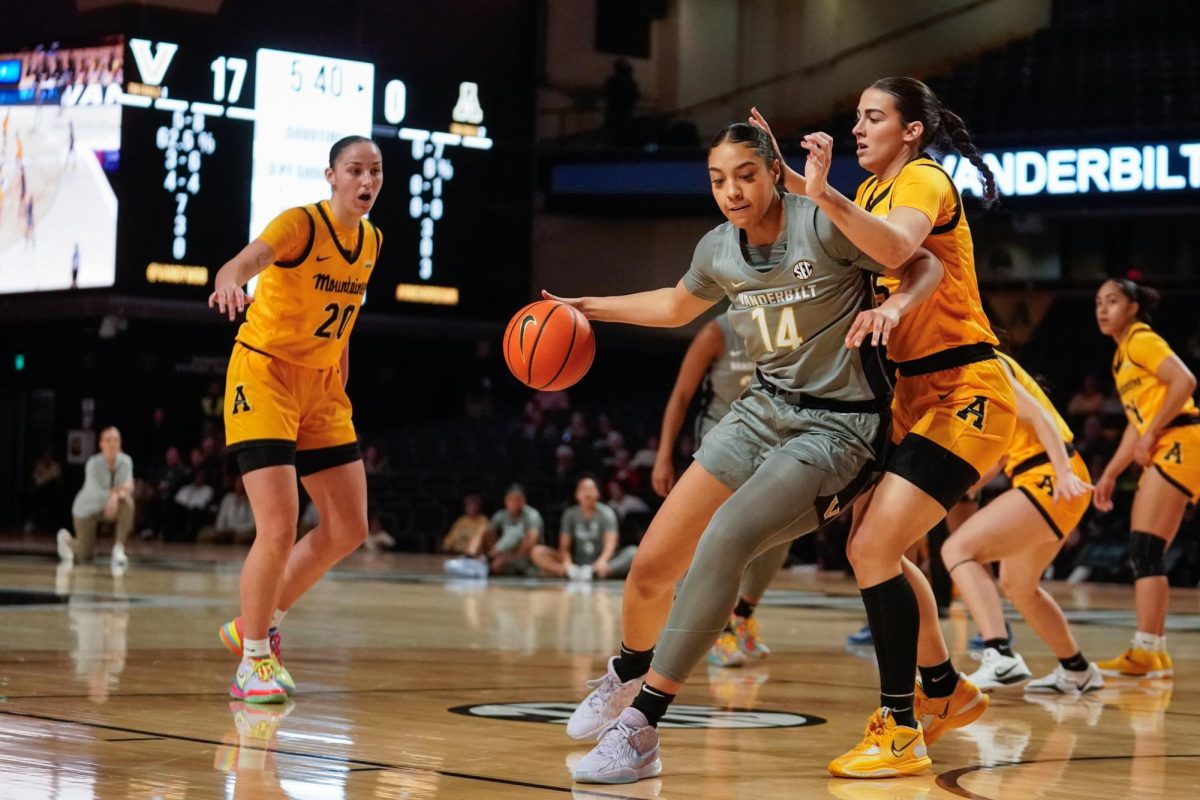On Jan. 28th, the Vanderbilt Commodores were simply outmatched by the No. 1 South Carolina Gamecocks. Although the Commodores kept the game close in the first quarter, the Gamecocks were eventually able to take control and earn a 91-74 victory. The story of the contest laid in the painted area, where South Carolina had the upper hand from start to finish. The Gamecocks outscored the Commodores in the paint 48-28 with senior center Kamilla Cardoso scoring 23 points in 24 minutes against an undersized Vanderbilt defense. However, even in defeat, Vanderbilt showed plenty of grit and effort against a superior foe. Vanderbilt’s 74 points were the second highest amount scored this season by a team against South Carolina, with four Commodores posting double-digit scoring totals. The standout was freshman guard Aga Makurat, who put up 18 points and 7 rebounds on 6-of-9 shooting, 4 of which came from behind the arc.
Back-to-back losses against Tennessee and South Carolina did show that Vanderbilt still has steps to take if it wants to hang with the perennial powerhouses of the SEC. Yet, the Commodores next opponent, the Ole Miss Rebels, have already taken a similar path to relevance that Vanderbilt hopes to replicate.
When Yolett McPhee-McCuin took over as the head coach of Ole Miss in 2018, the Rebels went 9-22. The following year, they went 7-23 and were winless in the conference. Progress continued though, with Ole Miss being the Women’s NIT Tournament runners-up in the 2020-21 season, then making the NCAA tournament in 2021-22 and ultimately reaching the Sweet Sixteen of the big dance a season ago. Over the past two years, Ole Miss has gone 45-14 and have kicked off this season by going 15-5, currently sitting at second in the SEC. Most recently, the Rebels notched a five-point victory over Tennessee, a statement win that is a testament to how much of a threat this team can be.
What makes the Rebels a problem on the hardwood is the assertive, elite defense that has become the focal point of their identity. In a manner similar to South Carolina, Ole Miss’s defense is suffocating, lengthy and imposing. Holding their opponents to only 57.2 points per game and ranking tied for second in the nation in blocks, the Rebels are used to being exceptionally aggressive on the defensive end.
Regardless, a possible vulnerability lies on the other end of the court. In general, Ole Miss has lacked a potent offense. In the Tennessee matchup, an offensive explosion from senior guard Marquesha Davis and sophomore forward Kharyssa Richardson delivered them a victory, but what sparked the surge was the Rebels’ defense settling down and churning out stops.
This season, Ole Miss has shot 41% from the field but is one of the worst 3-point shooting teams in the country, ranking 334th at a mark of 24.39%. At the same time, this team also attempts only around 12 shots a game from beyond the arc, another stat in which Ole Miss ranks near the bottom in all of Division I basketball. Unlike Vanderbilt’s previous opponent, South Carolina, Ole Miss won’t be as big of a threat from all areas of the court, being relegated more strictly to attacking the paint. Yet, with a starting lineup that features exclusively players that are 6 feet tall or higher, the Rebels are outstanding at getting to their spots and getting high percentage looks close to the rim. That highly touted aggressive mindset is also displayed in their knack to crash the boards, as they average 15.2 offensive rebounds per game — good for 22nd in the nation.
The star for Ole Miss is the aforementioned Davis, who has scored 20+ points in each of the Rebels’ past two games against Tennessee and Florida. Quick and crafty, Davis excels in the intermediate midrange area, especially off screens from her physical frontcourt. The roster surrounding her is jam-packed with skilled, high-energy players such as Richardson, Snudda Collins, Kennedy Todd-Williams and former All-SEC Defensive Team selection Madison Scott.
Against South Carolina, Vanderbilt wasn’t hurt the most by the towering prowess of Cardoso, but the fact that when the Commodores sent double teams, it left a shooter open on the exterior. Against Ole Miss, this strategy may actually work in Vanderbilt’s favor. The Gamecocks are the most efficient three-point shooting team in the country, whereas Ole Miss is less of a threat from deep. If the Commodores can establish some sort of formidable interior defense and push the Rebels to take shots from behind the arc, it could be the formula for success.
The true battle will begin when Vanderbilt has possession of the ball. In a strength on strength contest, the Vanderbilt offense will have to charge straight into the depths of the tough Ole Miss defense. With scoring that can come from anywhere, the Commodores’ offense must get into a groove and find a way to curate open looks. What attributed to Ole Miss’s five losses was partially not being able to keep up with offenses that found their rhythm early on. For example, Mississippi State shot 50% from the field and 80% from the free throw line in a 13-point victory over Ole Miss. In another matchup, No. 9 LSU shot 47% from the field and 61.5% from deep in an 11-point win over the Rebels. Vanderbilt has to play to its strengths and not get sucked into a low-scoring slugfest that Ole Miss will thrive in.
If Commodore forwards Sacha Washington and Khamil Pierre can establish a strong tone in the paint defensively, it will allow for Jordyn Cambridge and Iyana Moore to get this offense in a rhythm. From there, Vanderbilt can attempt to overpower Ole Miss offensively, getting shooters like Justine Pissott and Makurat involved. Even then, edging past Ole Miss will be another major challenge that Vanderbilt must overcome. A premier win is needed for this team’s resume and perhaps the Commodores can earn one in Memorial Gymnasium this Thursday.
Vanderbilt will tip off against Ole Miss on Feb. 1 at 6:30 p.m. CST.

